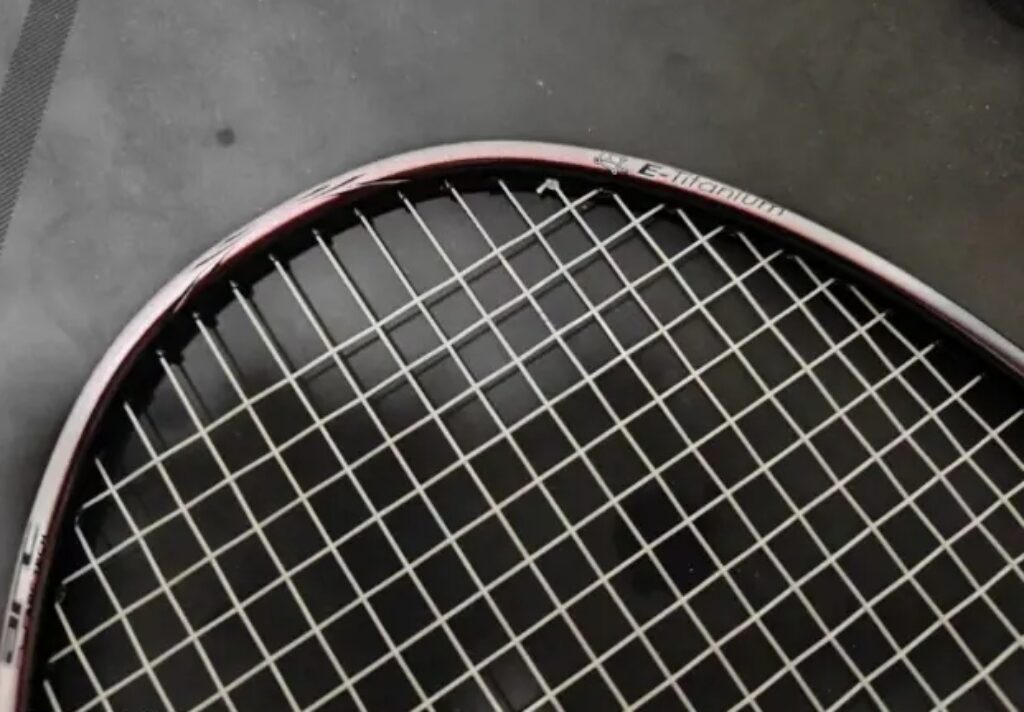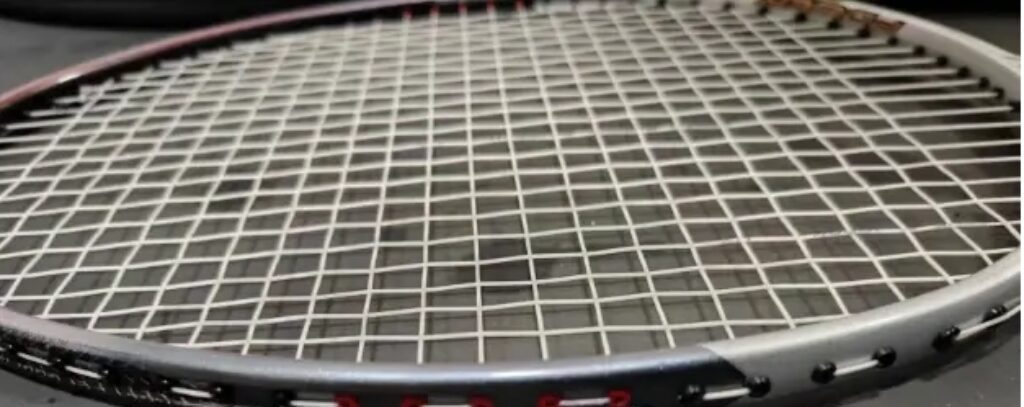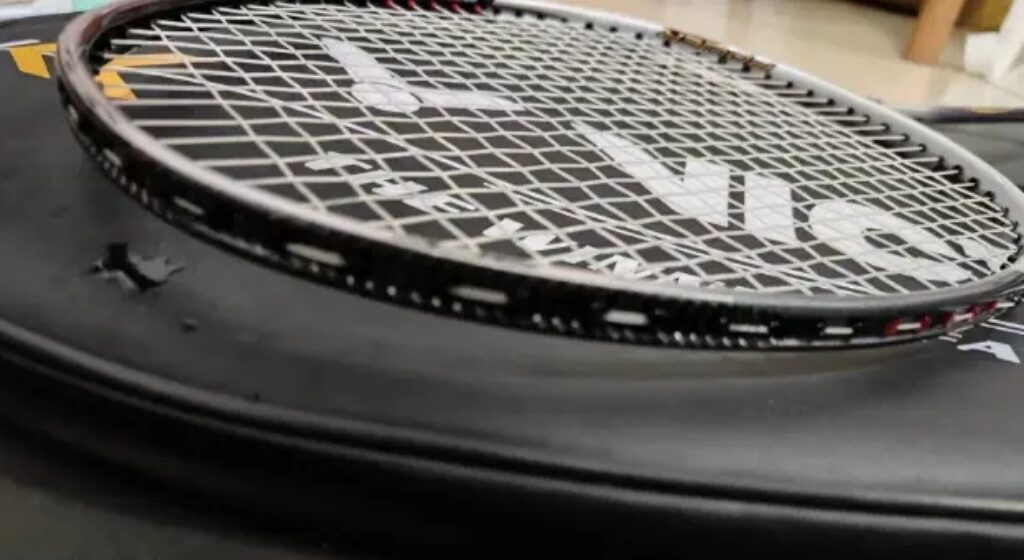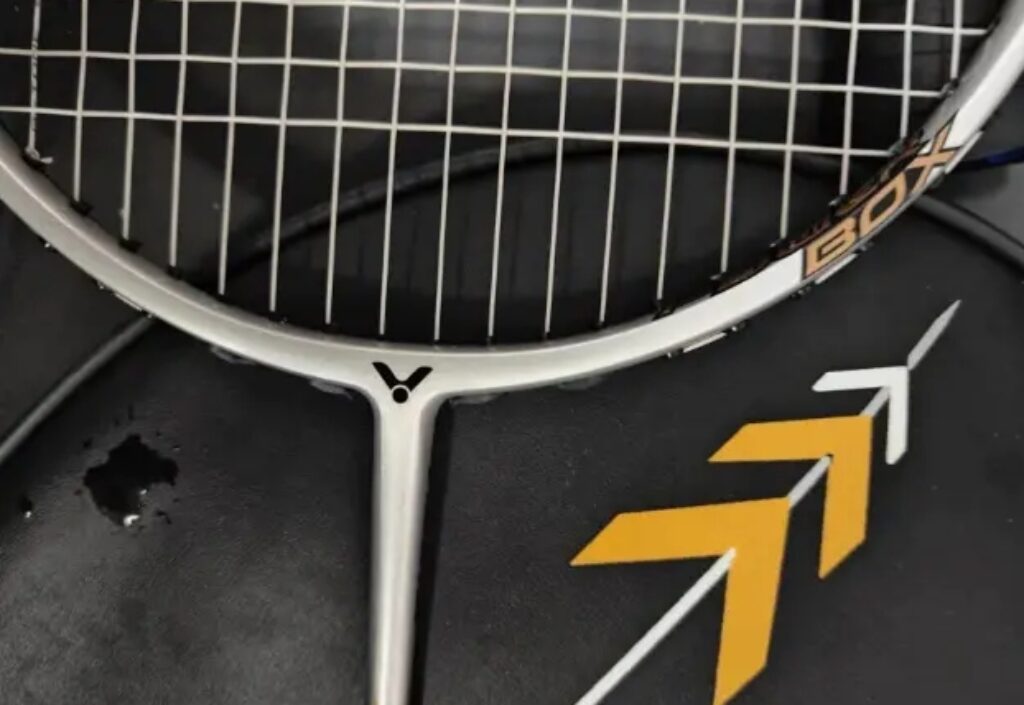I’m preparing to update the Yu 10 Metallic, but today I want to first introduce what I personally consider the best balanced racket from the Blue Factory that I’ve encountered so far. Some curious readers who treat these reviews like “digital preserved vegetables” might be surprised and wonder, “Hasn’t the Yu 9X already been reviewed?”
What I’m about to talk about is indeed not that racket. I couldn’t find the exact release date of this racket in my gear collection, but the earliest reviews date back to 2009.
So, apologies, but in my mind, this antique is more in line with my aesthetic preferences than the Yu 9X.

Specifications: 3UG5, no bottom cap, total weight in used condition is 91.9g, balance point is 293mm, 7.0mm shaft, length of 215mm, medium-to-high stiffness, small box-frame racket head, 72-hole string bed, 9-3 o’clock string grooves, warranty for 28-30lbs, strung with 25-27lbs Gosen G-Tone 5.
The appearance of the TI98 bears obvious marks of its era, giving a simple and unpretentious feel, though it doesn’t strike me as outdated but rather as a classic, much like the McLaren from the Silver Arrow era. The entire racket features a silver coating with a few stickers, and the sharp-edged, boxy frame design from Victor’s most primitive models solidifies its austere aesthetic—it truly is old-school, lacking even power grooves, making it a standard box frame. The shaft has some dark ring patterns, somewhat reminiscent of the texture seen on rackets using WOVEN carbon technology, but since there is no official mention of this, I lean towards attributing this to a paint effect. The large areas of titanium at the 10-2 o’clock positions on the frame are quite eye-catching, as titanium tech was highly sought after in rackets from that era.

Will the 3U version deter people again? At least before I actually used it on the court, I thought it might be an unrelenting weapon. But in reality, its weight feels quite pleasant. For one, its overall weight isn’t particularly high for a 3U racket, and two, the weight distribution in the head isn’t overly significant. Looking at the relatively low balance point reminded me of the website’s description of E-Titanium, which mentioned a weight-boosting effect, though this isn’t very apparent on the TI98. Nonetheless, the swing weight and overall weight make for a racket that feels solid in hand without being too energy-draining or uncomfortable to swing.
I went straight to the court with the TI98 without any prior adjustment period. Logically speaking, the smaller sweet spot on the 72-hole small-box frame should be harder to find, but I was in good form that day and didn’t encounter too many difficulties with offensive shots. I even took it into doubles play without any issues, which was a stroke of luck and may not reflect a typical experience. The shaft isn’t as sophisticated in construction as modern rackets with advanced technology, but with a diameter of 7.0mm, it looks quite thick. However, the elasticity is still there, similar to the MX60.

The relatively low balance point gives the TI98 a level of continuity that satisfies me. Though it can’t achieve faster swing speeds, it retains some degree of agility in hand. In doubles, as long as you’re not positioned too far forward and can react to the incoming shots, its performance in flat exchanges and fast blocks is acceptable. The real challenge lies in the lower forgiveness rate due to the small-box head; if you miss the sweet spot, it’s hard to generate a powerful return. Additionally, the shuttle doesn’t fly off the strings with a crisp bounce, which might feel unfamiliar to most users of speed-oriented rackets.
The lack of crispness is due to its shuttle-holding ability, which actually benefits net play, offering stable control and quick adaptation when performing net shots. The slight shock-absorption effect allows returns to stay close to the net. In the hands of a player with good finesse, the TI98 can deliver some excellent performance. In theory, the feel for drop shots and slices should also be quite good, but due to the smaller sweet spot, its tolerance remains less than ideal.

However, the lower tolerance does not affect the TI98’s defensive performance. As long as you’re positioned correctly, it’s not hard to defend against smashes, and it offers both the ability to clear to the backcourt with a rebound effect and to softly block shots close to the net. This is rare because it’s difficult to balance hard, bouncy, and shuttle-holding characteristics. This also reflects the excellent balance of this racket. Aside from some fast, overhead clears that are hard to hit the sweet spot and produce quality shots, I believe the TI98 has a high enough floor for performance.
As for its offensive capabilities, I think the word “shocking” sums it up. Despite not having an extremely high swing weight or a highly elastic shaft, when you hit the sweet spot during a full-powered strike, the shot feels exceptionally solid and stable. The TI98’s ability to deliver speed and power in smashes largely depends on how accurate and forceful your strike is, accurately reflecting the user’s technique and physical strength. Its heaviness is different from that of rackets like the ZSP, with less of a whip-like feeling and a pure, solid strike due to the small-box head. In the backcourt, a well-executed smash can often break through the opponent’s defense. The directional clarity provided by the box frame ensures you won’t miss your mark or struggle to bring the shuttle down, and the excellent feedback allows me to feel both the shaft and string bed flexing and storing energy.

Currently, the price for this racket and its older sibling fluctuates around 500 RMB. Considering its quality, I think it’s well worth the price, performing half a level or even a full level better than the mid-range offerings from the three major brands in this price range. And this is due to careful tuning and high-quality materials, rather than relying on differentiated designs (speed, offense) to excel. If I had tried it a week earlier, it would have definitely made it into my last roundup post.
However, after the trial, I’ve developed a bit of mistrust towards the new rackets on the market. Over the years, advancements in production technology and manufacturing processes haven’t fundamentally improved the experience of using rackets. Instead, they’ve only made rackets more varied and specialized as new materials are discovered. Yet, if you were to quantify the overall performance of a racket, I doubt the reference values today would be much better than those of top-tier models from one or two decades ago.
This racket has once again greatly changed my perspective on balanced rackets.


Leave a Reply